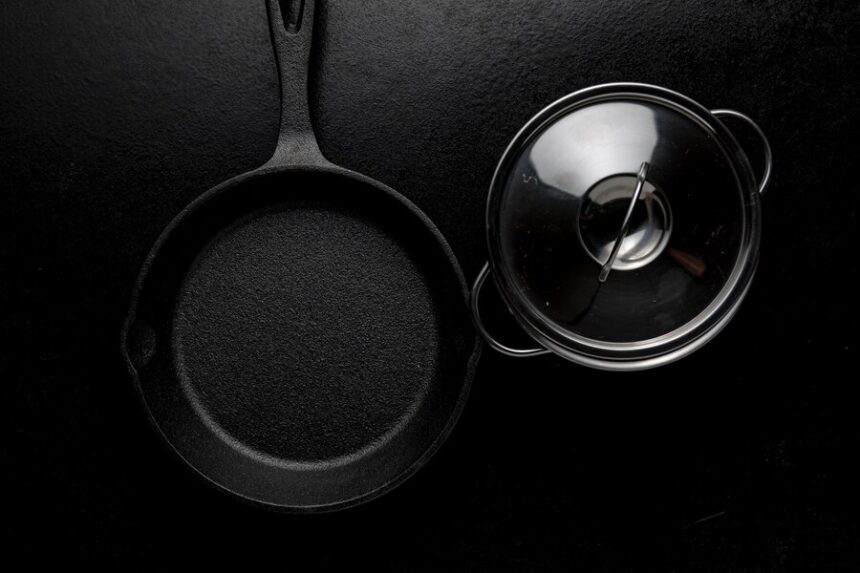Non-stick cookware has changed the way people cook by making it easier to prepare food without sticking. This type of cookware is popular because it offers quick cleanup, reduced need for oil, and even cooking. With a variety of non-stick surfaces available, it is important to understand the options to choose what best fits personal cooking needs.
In recent years, advancements in non-stick technology have led to safer and more durable products. Many brands now focus on health and environmental factors, ensuring their coatings are free from harmful chemicals. Understanding these differences can help home cooks make better choices when purchasing new pots and pans.
Selecting the right non-stick cookware involves knowing not only the type of coating but also how to maintain it. Proper care can extend the life of cookware, ensuring it remains effective and safe for years to come.
Key Takeaways
- Non-stick cookware offers easy cooking and cleaning benefits.
- Safety advancements have improved the options available today.
- Proper care is essential for ensuring longevity and effectiveness.
History of Non-Stick Cookware
The history of non-stick cookware began in the early 20th century. In 1938, chemist Roy Plunkett accidentally discovered polytetrafluoroethylene (PTFE) while researching refrigerants at DuPont.
This new material was slippery and non-reactive. DuPont patented it in 1941 and branded it as Teflon.
Non-stick cookware made its market debut after World War II. It quickly gained popularity for its convenience, making cooking and cleaning easier.
By the 1960s and 70s, non-stick frying pans became a common item in many kitchens. They represented a new wave of convenience products designed for modern life.
The 1980s saw non-stick cookware sales soar into a multi-billion dollar industry. Many consumers preferred it for its ease of use and ability to cook with less oil or fat.
Despite advancements in technology, safety concerns have arisen over the use of certain non-stick coatings. Today, there is a focus on using safer chemicals and alternatives to traditional Teflon.
Non-stick cookware continues to evolve, with new materials being developed to enhance cooking experiences. Its history reflects significant innovations in kitchen technology over the decades.
Types of Non-Stick Coatings
Non-stick cookware comes with various coatings, each offering unique benefits and drawbacks. Understanding the different types can help in choosing the best option for cooking needs.
Polytetrafluoroethylene (PTFE)
Polytetrafluoroethylene, commonly known as PTFE, is a widely used non-stick coating. It is often associated with the brand name Teflon. This coating allows for easy food release and cleanup, making it a popular choice for frying pans and skillets.
PTFE is heat resistant and can handle high temperatures, but there are limits. Overheating can lead to the release of harmful fumes. Regular care is essential to ensure the coating remains intact. Avoid metal utensils and high-heat cooking to extend the life of these pans.
Ceramic Coatings
Ceramic coatings are made from natural materials and do not contain PTFE or PFOA. This alternative provides a non-stick surface that is easy to clean and safe for cooking. They are known for being more environmentally friendly than other coatings.
One drawback is that ceramic coatings may not be as durable as PTFE. They can wear down over time, especially if used frequently at high temperatures. Proper care includes using soft utensils and hand washing instead of using a dishwasher.
Silicone Coatings
Silicone coatings are another option for non-stick cookware. Known for their flexibility and heat resistance, silicone can be used safely in both bakeware and cookware.
Silicone is non-reactive, meaning it won’t interact with acidic foods. This makes it a good choice for various dishes. However, silicone may not offer the same level of non-stick performance compared to PTFE or ceramic options. It’s best suited for low-heat cooking.
Enameled Cast Iron
Enameled cast iron cookware features a coating of enamel, which provides a non-stick effect. This type of cookware combines the benefits of cast iron with a smooth, easy-to-clean surface. It is perfect for slow cooking and excellent at retaining heat.
While enameled cast iron is sturdy, it can chip if not handled carefully. It is safe for cooking at high temperatures and can be used in the oven. Care includes hand washing and using wooden or silicone utensils to avoid damaging the enamel.


